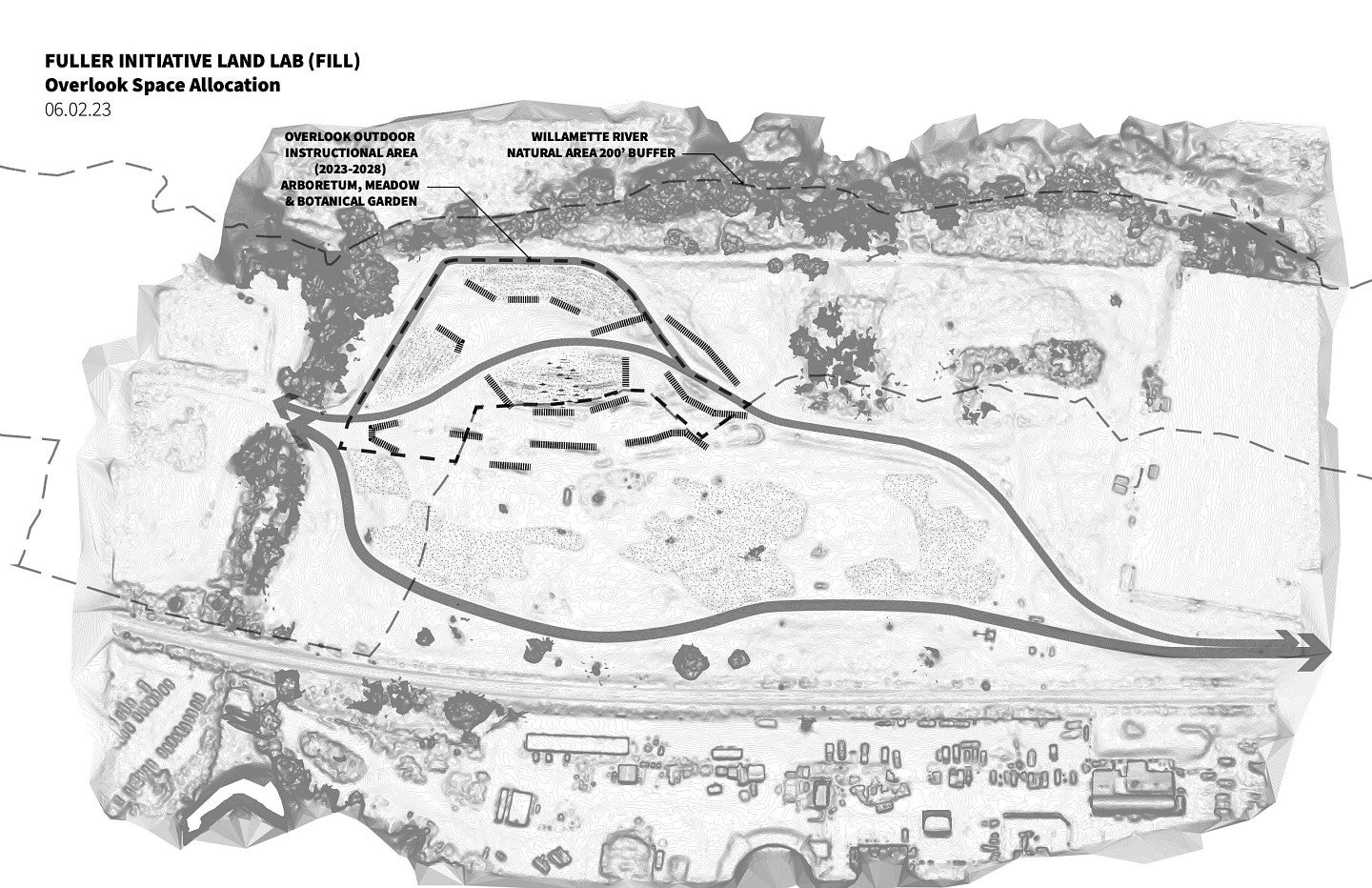The Department of Landscape Architecture (UOLA) at the College of Design has a reason to celebrate. The department was recently allocated space to operate the “Overlook Outdoor Instructional Area” over the next five years. “Overlook” refers to both the Willamette River Natural Area Landscape Management Plan recommendation for a river viewpoint adjacent to the site, as well as the nationally awarded program which lies at the heart of the Fuller Initiative.

The space allocation will allow the continuation of an ongoing field experiment conducted by Professor of Practice, Michael Geffel, and the public display of temporary landscape installations as showcased during last summer’s Oregon Experience Laboratory exhibition.
"We at the Fuller Initiative Land Lab (FILL) are honored by this agreement and look forward to being part of the site’s ecological regeneration over the coming years," explained Geffel. "The Outdoor Instructional Area is a unique asset for the College of Design with the University of Oregon’s (UO) commitment to its Environment Initiative and forthcoming Bachelor of Environmental Design degree."
This particular piece of land was formerly owned by Eugene Sand & Gravel who quarried and filled the site before its purchased by UO in 1968. Since the UO purchase, the site has been mown once or twice yearly to control blackberry emergence and fire risk. With the five-year allocation, the site is bound to be busy.
The spring's Overlook seminar hosted sound artist, Lisa Schonberg, for the inaugural year of the outdoor instructional area. Schonberg lead a workshop called Cryptic Sounds during which students were trained in “soundscape ecology” and developed compositions from a diverse collection of recordings including the dawn chorus, kildeer, foliage (wind), ants (contact mic), mill race (hydrophone), rail line (geophone), spring game festivities, and the Eugene Marathon.
A field broadcast of these compositions will take place at the Land Lab from 11 am - 1 pm, on Friday, June 16th, alongside temporary installations, and instrument prototypes from the seminar. Light refreshments will be served. Eventually, these compositions will be accessible on the Fuller Initiative Land Lab website, which currently summarizes the field experiments and exhibitions that took place from 2018-2022.
